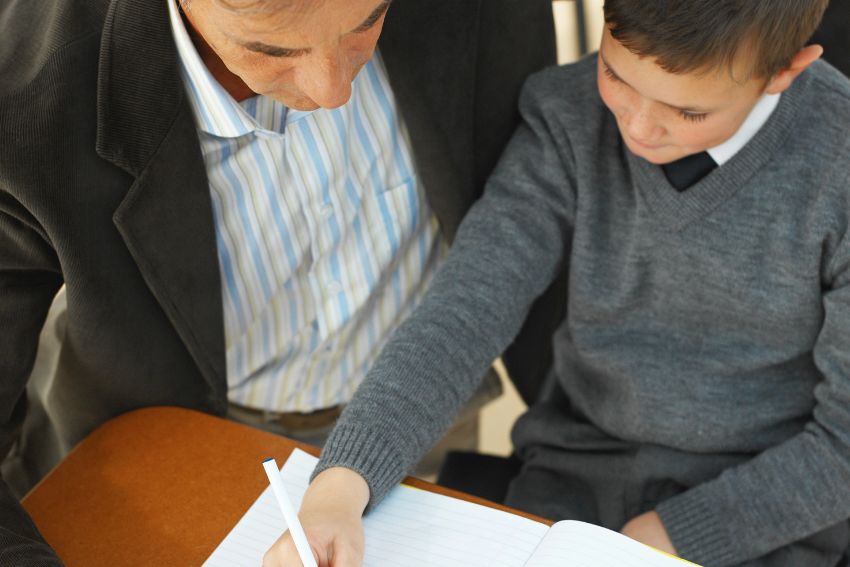Confused about Year 6 SATs scores? Many parents struggle to interpret the results, but don’t worry-this is Year 6 SATs Scores Explained in a simple way. With SATs Results 2025 approaching, it’s important to understand how these scores work and what they mean for your child’s progress.
Year 6 students take standardised SATs tests at the end of Key Stage 2 (KS2) to assess their skills in English and Maths. These tests help schools track progress before students move to secondary school. While SATs scores don’t directly impact a child’s future, they highlight strengths and areas for improvement.
SATs results can be confusing, as they use scaled scores rather than simple grades. Schools rely on these scores to group students, offer extra support, and monitor progress. Understanding them helps parents make informed decisions about their child’s learning.
So, here are Year 6 SATs scores explained – how they work, what they mean, and why they matter. In this blog, you’ll learn about SATs scoring, the grading system and how to support your child after receiving their results. Let’s dive in!
How Do Year 6 SATs Work?
Now that we’ve covered why SATs scores matter, let’s take a closer look at how Year 6 SATs are structured and what you need to know about the results. Year 6 SATs assess three main subject areas:
| Subject | Number of Papers | Content Covered |
| English Reading | 1 Paper | Comprehension questions based on fiction, non-fiction, and poetry extracts. |
| Grammar, Punctuation & Spelling (GPS) | 2 Papers | One grammar & punctuation paper, one spelling test. |
| Maths | 3 Papers | One arithmetic paper, two reasoning papers. |
Students take these tests under timed conditions, answering multiple-choice, short-answer, and extended-response questions. Teachers assess writing throughout the year instead of using an exam.
When are Year 6 SATs in 2025?
Year 6 SATs take place from Monday, 12 May 2025, to Thursday, 15 May 2025. Schools follow a set timetable for these assessments, as outlined by the official guidelines. Since we know when the tests take place, let’s look at how SATs are marked and what the scores mean for your child’s progress.
Year 6 SATs Scores Explained
Understanding how SATs are marked is key to interpreting your child’s results. Unlike school tests, which use percentages or letter grades, Year 6 SATs use scaled scores. This system ensures fairness, as test difficulty can vary slightly each year.
How to Interpret Year 6 SATs Scores
SATs results are reported as scaled scores, ranging from 80 to 120, to ensure fairness in assessment. Here’s how they are interpreted:
| Scaled Score | What It Means |
| 120 | Highest possible score, excellent performance |
| 110-119 | Exceeding the expected standard |
| 100-109 | Meeting the expected standard |
| 80-99 | Below the expected standard, may need extra support |
A scaled score of 100 or above means a student has met the expected standard, while a score below 100 suggests areas for improvement.
What Happens If a Child Scores Below 100?
There is no official pass or fail in SATs, but students who score below 100 may receive extra support in Year 7. Schools use these scores to identify which students need additional help in English and Maths.
What is the highest score in SATs Year 6? For Key Stage 2 highest score is 120. If your child has achieved anything above 100, it means that they did great!
How Schools Use SATs Results?
SATs scores don’t affect a child’s ability to move on to secondary school, but they do help teachers and schools plan for the next stage of learning. Secondary schools may use SATs results to:
- Group students by ability for subjects like Maths and English.
- Provide targeted support to students who need extra help.
- Track overall progress and assess trends in student performance.
While SATs scores are important, they are just one measure of a child’s abilities. Schools also consider teacher assessments, individual strengths, and overall progress when making decisions.
When and How to Get Year 6 SATs Results 2025
We’ve explained Year 6 SATs Scores and what they mean, let’s look at when and how parents can access their child’s results.
When Are SATs Results Available?
Schools usually receive Year 6 SATs results in early July, a few weeks after the tests. For SATs 2025, results are expected to be released around Tuesday, 8 July 2025. Schools then pass them on to parents, often alongside end-of-year reports.
Unlike GCSEs or A-Levels, SATs results aren’t published publicly. Instead, they are shared with parents, students, and the child’s future secondary school.

How to Access Your Child’s Year 6 SATs Scores
Parents typically receive their child’s SATs results directly from the school. Here’s how you can check them:
School Report: Most schools send SATs scores home with the end-of-year report in July.
Parent Meetings: Some schools arrange meetings or phone calls to discuss results, especially if a child may need extra support.
Online Portals: Certain schools use digital platforms where parents can log in and view their child’s SATs scores.
If you’re unsure about when or how you’ll receive the results, it’s best to check with your child’s school in advance. Now that we know when SATs results are released and how to access them, let’s explore how this year’s results compare to previous years and what they mean for students moving forward.
SATs Results 2025: How This Year’s Scores Compare to Previous Years
We’ve discussed how to access your child’s SATs results, but now let’s delve into what the 2025 SATs results reveal about student performance and any recent changes that may have influenced these outcomes.
National Performance Trends
As of now, the detailed national performance data for the 2025 SATs has not been released.
Typically, the Department for Education publishes these statistics in July each year. In July 2024, reports showed that 61% of pupils in England met the expected standards in reading, writing, and maths. This marked a slight improvement from the previous year but remained below pre-pandemic levels. Once the 2025 data becomes available, it will provide insights into how students have performed compared to previous years and help identify any emerging trends.
Impact of Any Changes
In recent years, there have been discussions about potential changes to the SATs and the broader curriculum. For example, the National Association of Head Teachers has recommended abolishing certain compulsory tests for younger students, arguing that they are unnecessary and consume valuable resources.
However, as of the 2025 SATs, no significant changes to the KS2 assessments have been implemented. The structure and content of the tests remain consistent with previous years, ensuring continuity in assessing student performance. Understanding these aspects of the 2025 SATs results can help parents and educators support students effectively as they transition to secondary education.
Supporting Your Child After Year 6 SATs
Now that we’ve explored what the 2025 SATs results tell us, let’s focus on what happens next and how you can support your child beyond their SATs. While these tests mark the end of Key Stage 2 (KS2), they are just one part of your child’s learning journey.
What’s Next After KS2 SATs?
Once SATs are over, most students will spend their final weeks of Year 6 enjoying lighter lessons, end-of-year activities, and transition days at their new secondary school. Schools may use SATs scores, alongside teacher assessments, to help place students into ability groups for subjects like Maths and English in Year 7.
However, SATs results do not affect school admissions. Whether a child meets or exceeds expectations, secondary schools will continue supporting their development through personalised learning plans.

How to Help Your Child Progress?
The move to secondary school can feel like a big step, but with the right preparation, your child can start Year 7 feeling confident and ready to learn. Here are some practical ways to support them:
- Encourage a Growth Mindset – Remind your child that SATs are just a small part of their education. Effort and progress matter more than scores.
- Build Independent Learning Skills – Secondary school requires more self-directed learning. Help them get used to organising homework, planning revision, and managing their time.
- Strengthen Core Skills – Keep learning fun over the summer. Encourage reading, problem-solving, and creative activities to keep their minds engaged.
- Talk About the Transition – Discuss any worries or excitement about Year 7. Many schools offer transition days where students can visit their new school, meet teachers, and get familiar with their timetable.
- Stay Positive and Supportive – Secondary school is a fresh start. Focus on building confidence, celebrating achievements, and reassuring your child that they will adapt to new challenges.
With the right support and a clear understanding of Year 6 SATs scores, your child can step into Year 7 feeling prepared and motivated. Using online study resources like BBC Bitesize can help children revise key topics with interactive lessons, quizzes, and video explanations. Next, let’s wrap up with some final thoughts on SATs results and why they are just one part of a child’s academic journey.
Conclusion
Remember, Year 6 SATs scores highlight strengths and areas to improve, but they don’t define a student’s future. What truly matters is how they build on their progress as they step into Year 7.
For parents, supporting this transition is key. Encouraging good study habits, building confidence, and making learning engaging can help students feel more prepared for the next stage. Whether your child excelled in SATs or found them challenging, there are always ways to improve and build on their knowledge.
If you’re seeking online tutoring For KS2 SATs , tutors can provide personalised support to strengthen key skills and ensure a smooth transition to Year 7 (KS3). With the right guidance, your child can feel ready for the challenges ahead!
Blogs You Might Find Interesting
What is Key Stage 3?
Key Stages and Ages
FAQ’s
Is Year 6 SATs hard to pass?
Year 6 SATs check if students meet the expected standard, not if they pass or fail. A scaled score of 100+ means they meet the standard, while below 100 may need extra support. With regular revision and practice, students can feel more confident and prepared.
How long are year 6 SATs?
Year 6 SATs take place over four days, with each test lasting between 30 and 60 minutes.
English Reading: 60 minutes.
Grammar, Punctuation & Spelling (GPS):
Paper 1 (Grammar & Punctuation) – 45 minutes
Paper 2 (Spelling) – 15 minutes
Maths:
Paper 1 (Arithmetic) – 30 minutes
Papers 2 & 3 (Reasoning) – 40 minutes each
What is the purpose of SATs UK?
SATs, or Standard Assessment Tests, measure children’s academic progress in Year 2 and Year 6. Primary schools administer these tests to assess student achievement and track progress. The results help evaluate a school’s performance and ensure accountability for student attainment.
Are SATs only in England?
No, SATs are only used in England. Other parts of the UK have different primary school assessments, but most children still take some form of test during primary education.








